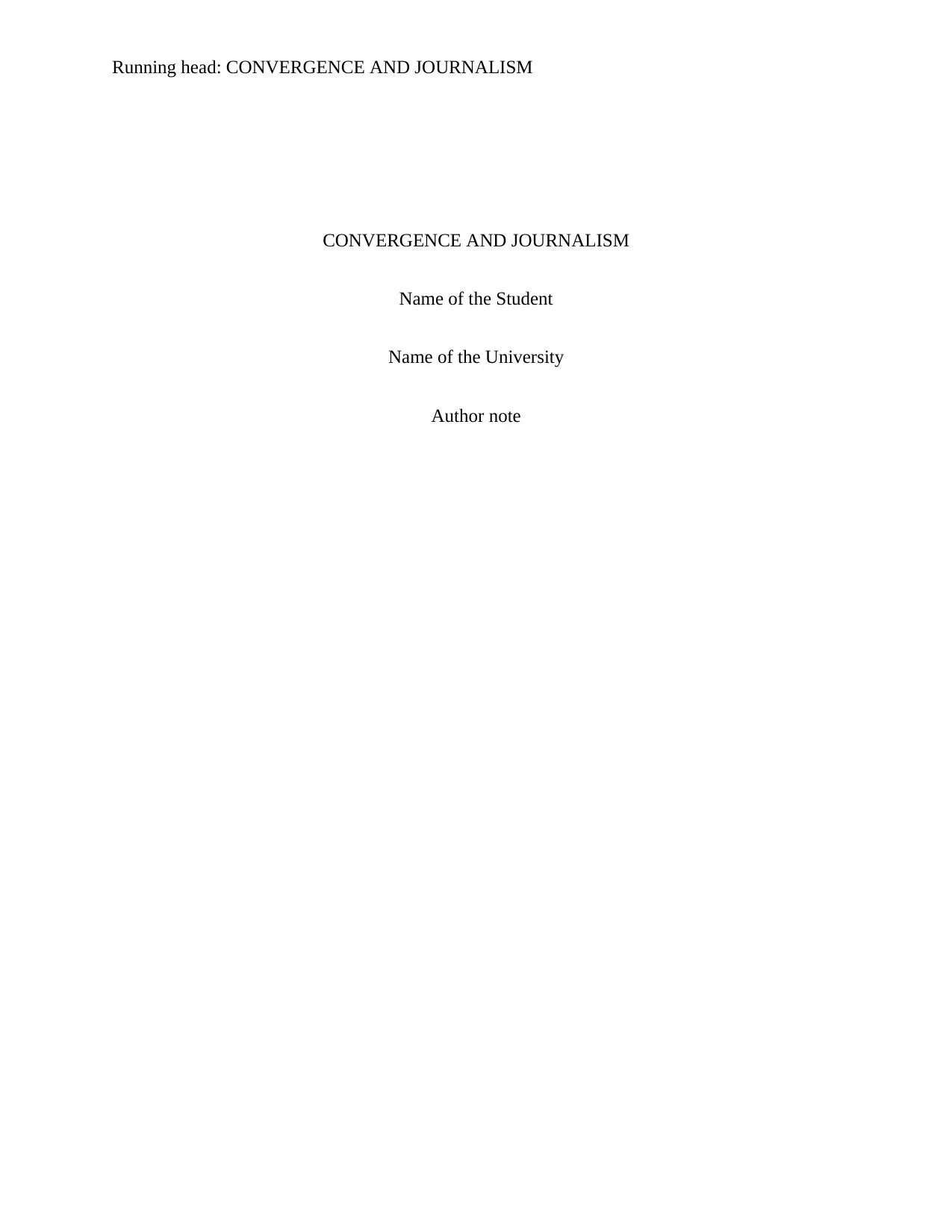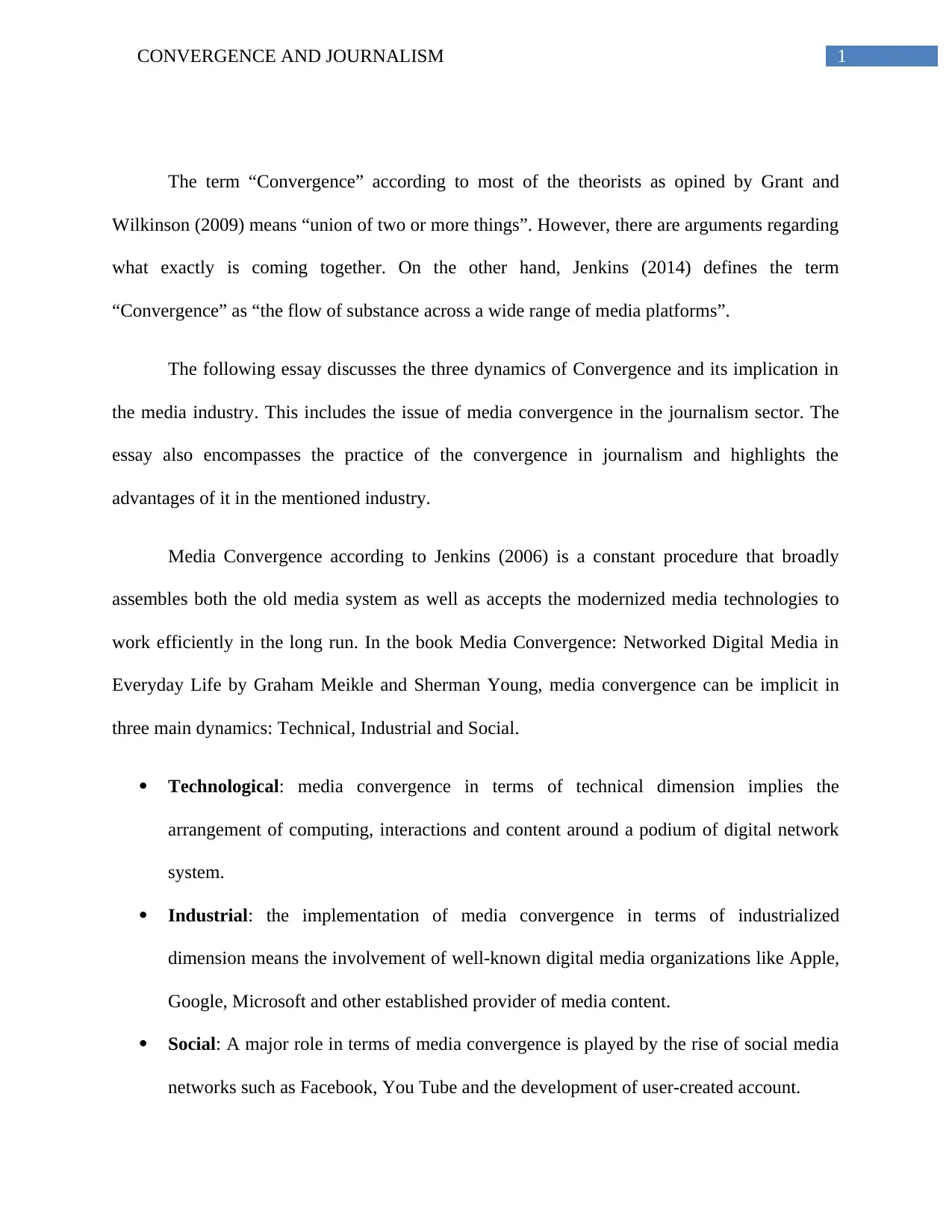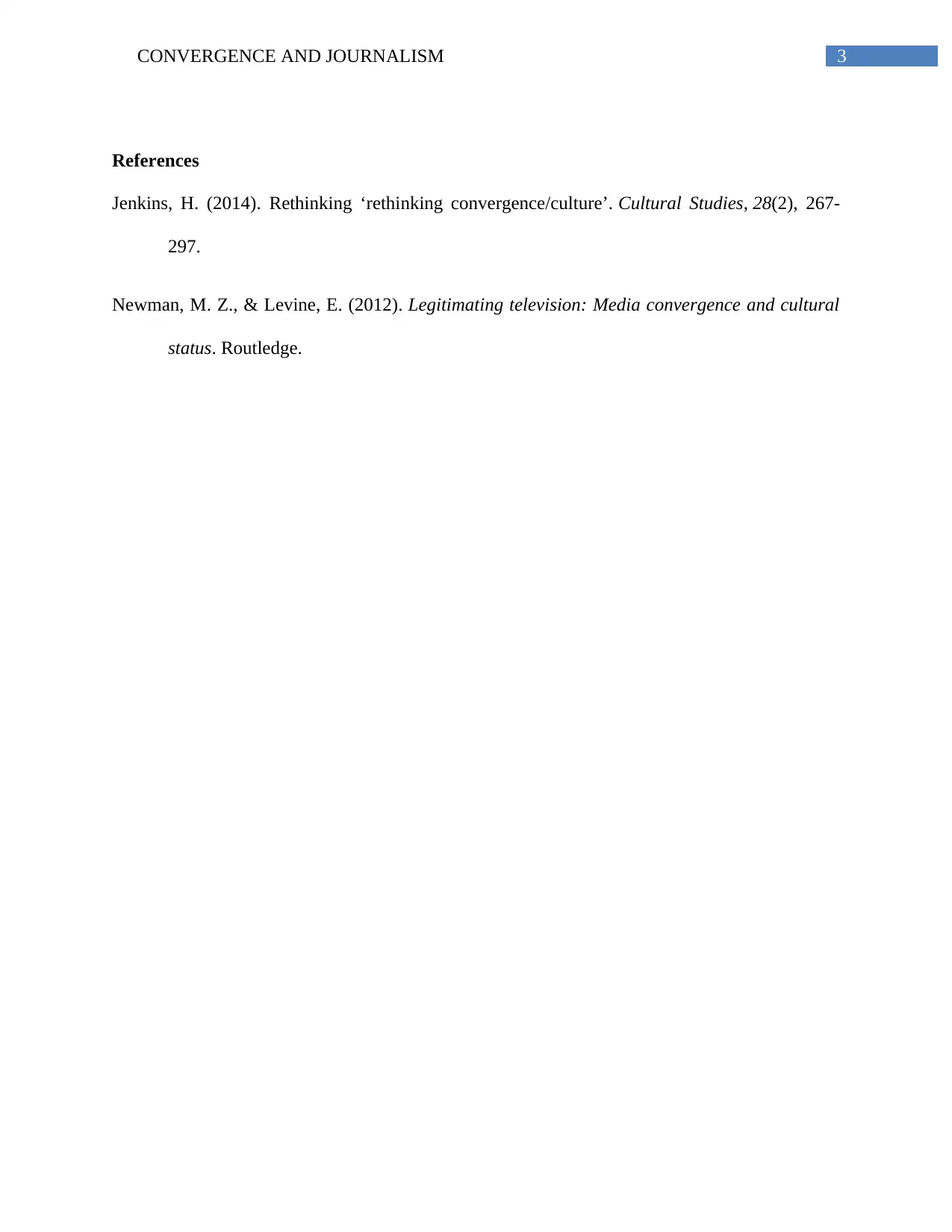Convergence and Journalism: Exploring the Dynamics and Implications
VerifiedAdded on 2020/04/01
|4
|419
|56
Essay
AI Summary
This essay provides an overview of media convergence and its implications within the field of journalism. It begins by defining convergence, referencing scholarly sources to establish a foundation for the discussion. The essay then explores the three key dynamics of media convergence: technological, industrial, and social, providing detailed explanations of each. It further examines the practical applications of convergence in journalism, highlighting its benefits and impact on the industry. The essay also discusses the integration of various media forms like broadcast, photography, print, and the internet, emphasizing how these elements contribute to a more proficient and competitive journalism landscape. The reference section includes citations from Jenkins (2014) and other sources to support the arguments presented.
1 out of 4











![[object Object]](/_next/static/media/star-bottom.7253800d.svg)